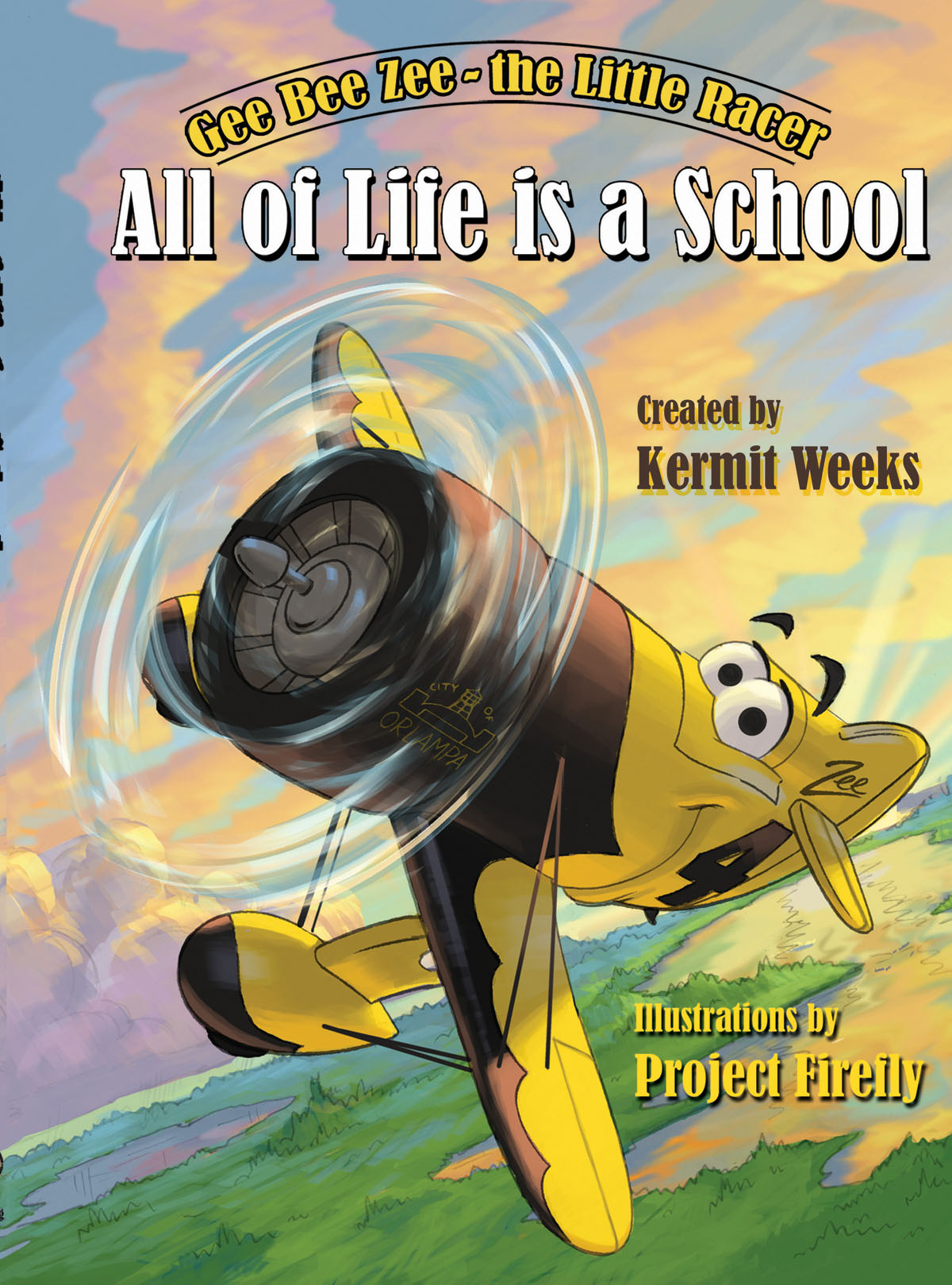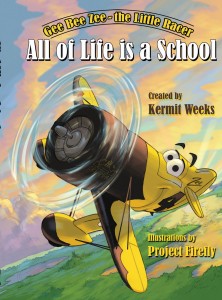
The main character in the book is an airplane named Gee Bee Zee. The original Gee Bee Zee was the little yellow airplane that won the Thompson Trophy in 1931.
By Henry M. Holden
Kermit Weeks, the 55-year-old founder of the Central Florida attraction Fantasy of Flight, and the Miami-based Weeks Air Museum, recently published his first book, “Gee Bee Zee—All of Life is a School.” It wasn’t an overnight idea, and it didn’t start out to be a book.
“The idea for a book on self-discovery came to me about four and a half years ago,” said Weeks. “The book started out to be a little, 30-minute children’s’ cartoon on a CD and then began to evolve into something larger—a feature film. A lot of blood, sweat and tears went into it.”
Weeks wrote music and songs for it and then began to realize that a feature film was an expensive project.
“I condensed it into a 64-page book to get some product on the shelf,” he said. “The neat thing about this book is it’s not going to be a one-off. I have a big plan about where I want to go with this concept.”
Weeks said that what he’s creating has the potential to be an entirely separate industry within the existing attraction industry.
“This is going to be about things that are real, and it’s not about airplanes,” he said. “The airplanes are simply a means of delivering a message. I learned a long time ago that if I’m going to be involved in a product about airplanes, I might as well close the doors and put my money in my mattress. My ‘unsuccess’ in the museum business has driven me to search for, and come up with, a product that will make me successful, but it’s not success in a monetary sense. What I’m trying to do is come up with a product where people self-discover themselves and the power and potential they have within.”
It sometimes takes years to find that power.
“I know why I’m here. I know what my talents are and what my potential is, to a degree,” said Weeks. “I’m following that and loving what I’m doing. I don’t have to do this, but I can’t imagine doing anything else. I’m hoping to help people harness that potential within each of them.”
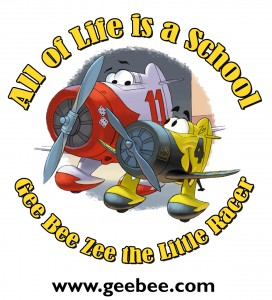
“All of Life is a School” is the first part of Kermit Weeks’ long-term goal to help to shift global consciousness. Gee Bee Zee introduces the first round of airplane characters he’s developed.
Weeks found a goldmine for a storyline in the 1930s air racers.
“I took the most prolific period in aviation history, the Golden Age of Aviation, which was a non-wartime environment,” said Weeks. “Aviation was going beyond itself, pushing the boundaries, and trying to be all it could be. The characters at this mythical airfield called Fantasy of Flight are striving to be all they can be, which in the end is my product.
“The kids are our future, but the reality is that anyone, at any point in their journey, always has another opportunity to take a step in a new direction. At any point, anyone can go beyond themselves because we’re always limited; how we create our reality is through limitations we put on ourselves. All I want to do is get people to look beyond the horizon.”
Weeks didn’t write the book targeted at a particular age group.
“I didn’t write this for one group of kids,” said Weeks. “I just wrote it. Everybody likes to put everything in a box. If I were to have targeted an age group, it would be somewhere around 8 and under.
“The airplanes in the book are related to real airplanes in history, and the personalities of the airplanes connect with an aspect of the Golden Age, the designer, the builder or a pilot who flew one of the 10 airplanes in the book. I looked at this concept at one point and said, ‘Why hasn’t anyone thought of this before?'”
The main character in the book is an airplane named Gee Bee Zee.
“The original Gee Bee Zee was the little yellow airplane that won the Thompson Trophy in 1931,” said Weeks. “In the book, he has a big brother, Jimmy G. Gee Bee. They’re the Gee Bee brothers.
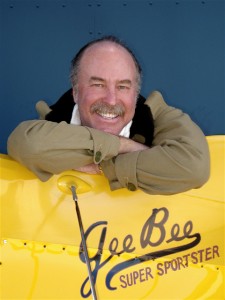
Kermit Weeks took the most prolific period in aviation history, the Golden Age of Aviation, which was a nonwartime environment, to build his characters. The characters at this mythical airfield, called Fantasy of Flight, are striving to be all they can be
“Missy is the racer, ‘Miss Los Angeles,’ a Brown B-2 flown by Roy Minor. Matty is the Laird Super Solution designed by Matty Laird. Bennie is the GDA-4 lookalikes, either Mike or Ike, designed by Benny Howard. Puff is like a GBY sportster, which some of the women raced. They didn’t race in the larger races, but in the Powder Puff Derbies.”
“All of Life is a School” is the first part of Weeks’ long-term goal to help to shift global consciousness. Gee Bee Zee introduces the first round of airplane characters he’s developed.
“I developed the characters as adolescents,” said Weeks. “They’re junior high school age, and their energies would be reflected by Zee, who would be the head of the football team—confident, popular and most likely to succeed. Puff would be the head of the cheerleading squad, very popular and very attractive. Curtiss would be the head of the wrestling team—stocky and not as handsome as Zee. Missy would be head of flag girls, an Elle Macpherson-type in the making. Benny would be the class geek—unsure of himself and a wallflower. Pancho is obviously the tomboy, a strong-willed, rough character.”
Weeks said he diversified the characters in a way that each character has its own quirks, as we all do in life.
“I want to illustrate how each of us has an opportunity to push our own boundaries, which would be completely different from the next person,” he said. “Here’s an example: If Puff is the head of the cheerleading squad, for her to push her boundaries, she has to get her fingernails dirty, because she’s the prissy one. For Pancho, that’s not a problem. She has to clean her fingernails, and get into a prom dress. The other characters (Jimmy, Roscoe, Stout and Matty) have been around, settled into life, have been successful and are wiser. I want to show everybody that each of us has our own individuality, and we each have our own ways of pushing our boundaries.”
The reason Weeks used adolescent characters is that they’re starting to go through puberty.
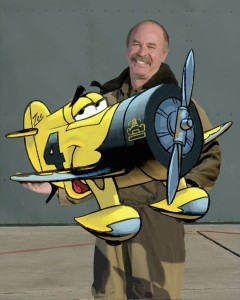
All of Kermit Weeks’ characters are junior high school age. Zee, who would be the head of the football team, reflects their energies. He’s confident, popular and most likely to succeed.
“They reflect the energy of that change of life period where they’re becoming themselves, wondering about what lies ahead and peer pressure, asking ‘Can I do it?’ and ‘What’s this all about?'” said Weeks. “Every one of us has gone through that period. There was a spike in a certain type of energy where we were all sitting there and realizing that there’s this big world out there, thinking, ‘What am I going to do?’ ‘Why am I here? Every one of us still carries that energy at a different level now. I think that everyone still relates to those questions, as well as ‘What’s coming down the road?’ and ‘Can I do it?’ We still deal with peer pressure as adults.”
The book is currently available at the Fantasy of Flight gift shop or on [http://www.amazon.com].











